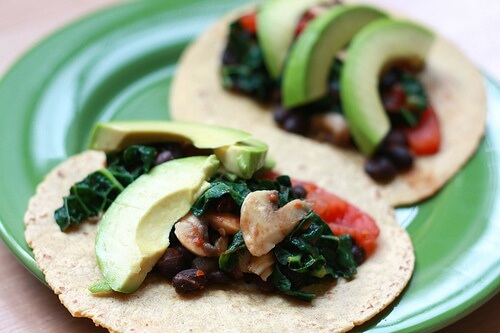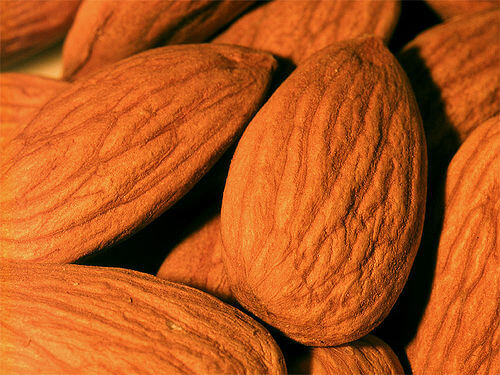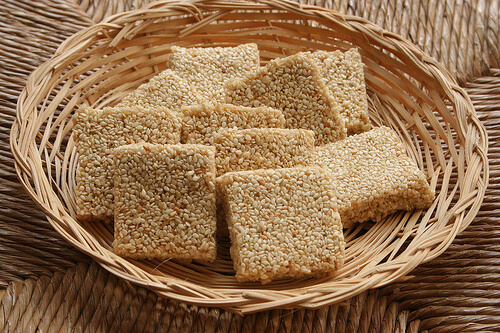When we think of calcium, we automatically think of milk, yogurt, cheese, etc. What we often do not know, however, is that there are also many other sources where we could extract this important nutrient for our development. Discover in this article which dairy-free products are high in calcium.
Calcium for everyone's taste
Calcium is not only present in dairy. This is undoubtedly good news for vegetarians and vegans, but also for people who have difficulty processing milk or for those who are looking for an alternative to animal products for whatever reason.
The following groups of dairy-free products are rich in calcium :
- vegetable drinks and juices
- green leafy vegetables
- nuts
- mineral water
Which dairy-free products are rich in calcium?
- Green leafy vegetables: These are some of the most important sources of calcium (even more than dairy) that you can find. Especially kale is full of it and contains as much as 135 mg of calcium per 100 grams of raw leaves. In addition, this typical winter vegetable also contains provitamin A, vitamin K and vitamin C and is therefore also seen as 'superfood'. Some other good choices within this group are chard and spinach. You can eat these vegetables cooked in combination with other vegetables, as stuffing in pasties or pizzas, in salads, in fritters, etc.
- Notes: When it comes to calcium, you can choose the best for the almond within this group. Almonds contain as much as 264 mg of calcium per 100 grams. They also contain magnesium, vitamin E, vitamin B2 and manganese and contribute to cholesterol lowering. Alternatives to almonds are Brazil nuts (160 mg per 100 grams) and hazelnuts. Enjoy nuts and eat them as a bite or snack (a handful of nuts between meals), use them to decorate pastries or drink them in the form of vegetable milk.
- Dried aromatic herbs: These herbs are usually not used very often, but if we would make a habit of adding them to the dishes we prepare, we will not only add flavor and aroma to our food, but also a healthy amount get calcium. You can also make an infusion of some of these herbs . The most recommended herbs are dried thyme, dill, marjoram, sage, oregano, mint and dried basil.
- Sesame seeds: Roasted sesame seeds contain more calcium than unroasted. They can be used to make tahini, a traditional pasta in Arabic cuisine. In addition to calcium, sesame seeds also contain vitamins B1 and B6, manganese, magnesium and copper. Add them to salads, pastries, bread and juices.
- Linseed: These seeds are similar to sesame seeds - they have a similar calcium content. The oil of flaxseed has an anti-inflammatory effect and prevents artherosclerosis. For example, you can use it in homemade bread or you can add it to juices, smoothies, pastries, salads, sauces or creams.
- Legumes: Legumes are an excellent source of calcium (13% of the composition), especially white or black beans. In addition, they also have other properties, such as stabilizing your blood sugar level and your blood pressure . Do not eat too many legumes, however, as this can cause flatulence. Combine legumes with vegetables to make casseroles.
- Dandelion: This herb is particularly good for the body. Dandelion works namely diuretic, is good for the liver and has great antioxidant properties. The young leaves can be eaten cooked just like spinach. They contain more calcium than milk, namely 187 mg per 100 grams. You can also cook and eat the carrot.
- Orange: This is one of the few types of fruit with a high calcium content, namely 65 mg per unit. Moreover, orange, as almost everyone knows, is very rich in vitamin C. You can eat the fruit on its own or mixed in smoothies , milkshakes, fruit salads or pastries and other types of desserts.
- Quinoa and amaranth: These "pseudo-cranes" should be included in every vegetarian or vegan diet thanks to their large calcium contribution. Amaranth is the most nutrient-rich plant you can find, because as much as 18% of the plant consists of calcium. Those who do not drink milk can mix amaranth with rice. You can also use the plant to make soup or simply bake it together with some other vegetables. Quinoa also contains beneficial properties for the body. It can be used as a substitute for, for example, rice and pasta or processed in patties, pastries etc.
- Eggshell: Since ancient times it has been said that this part of the egg contains a large amount of calcium and that it promotes the physical metabolism. Wash the egg without scratching the dish, then press a lemon out over the dish. Let it soak together for twelve hours, then remove the egg with a wooden spoon and drink the remaining liquid slowly.
The myths about calcium disproved
It is generally believed that dairy products contain more calcium than other products and that the calcium in dairy is best absorbed by the body. Drinking milk is often directly related to the occurrence of osteoporosis. Let us clarify the truth about this:
First, poppy seed offers us much more calcium than milk (1448 mg per 100 grams). Also algae are richer (1380 mg per 100 grams). Cow's milk also contains only 120 mg per 100 grams and the same goes for yogurt. Other sources that are packed with calcium are kombu seaweed, sesame, soy, almonds and kale (more than 150 mg per 100 grams).
Second, it has been proven that the calcium that is best absorbed by the body can be extracted from algae, followed by green leafy vegetables, nuts, oilseeds, whole grain and legumes. Only after these products are milk and dairy products on the list.
Finally, recent research shows that, contrary to popular belief, milk can cause osteoporosis when it is drunk throughout life. For example, this disease is more common in countries where most of the milk is drunk (Switzerland, Finland, Sweden and the Netherlands). In countries where less milk is consumed (Liberia, Cambodia, Ghana, Congo), osteoporosis is a very rare disease.











No comments:
Post a Comment